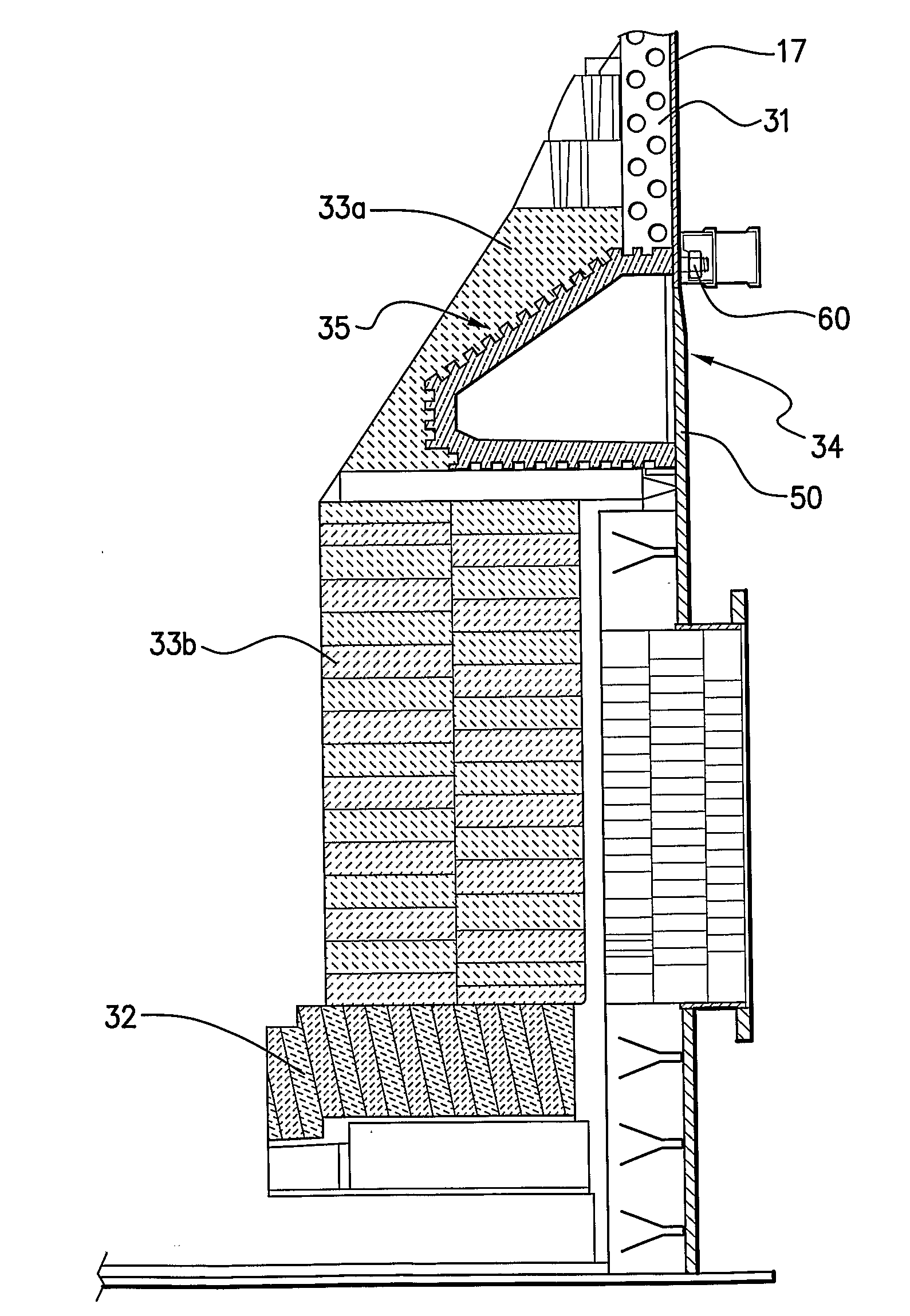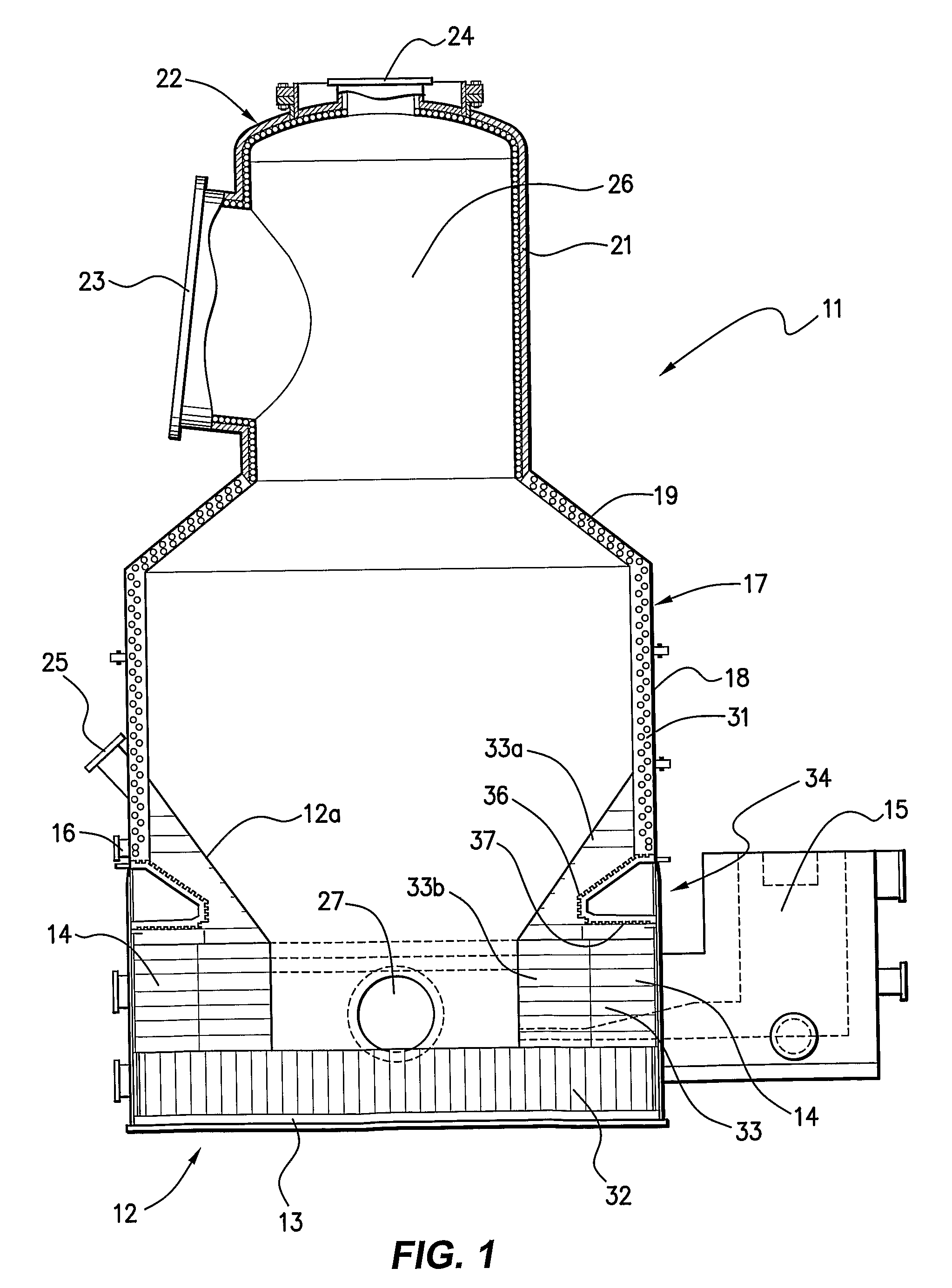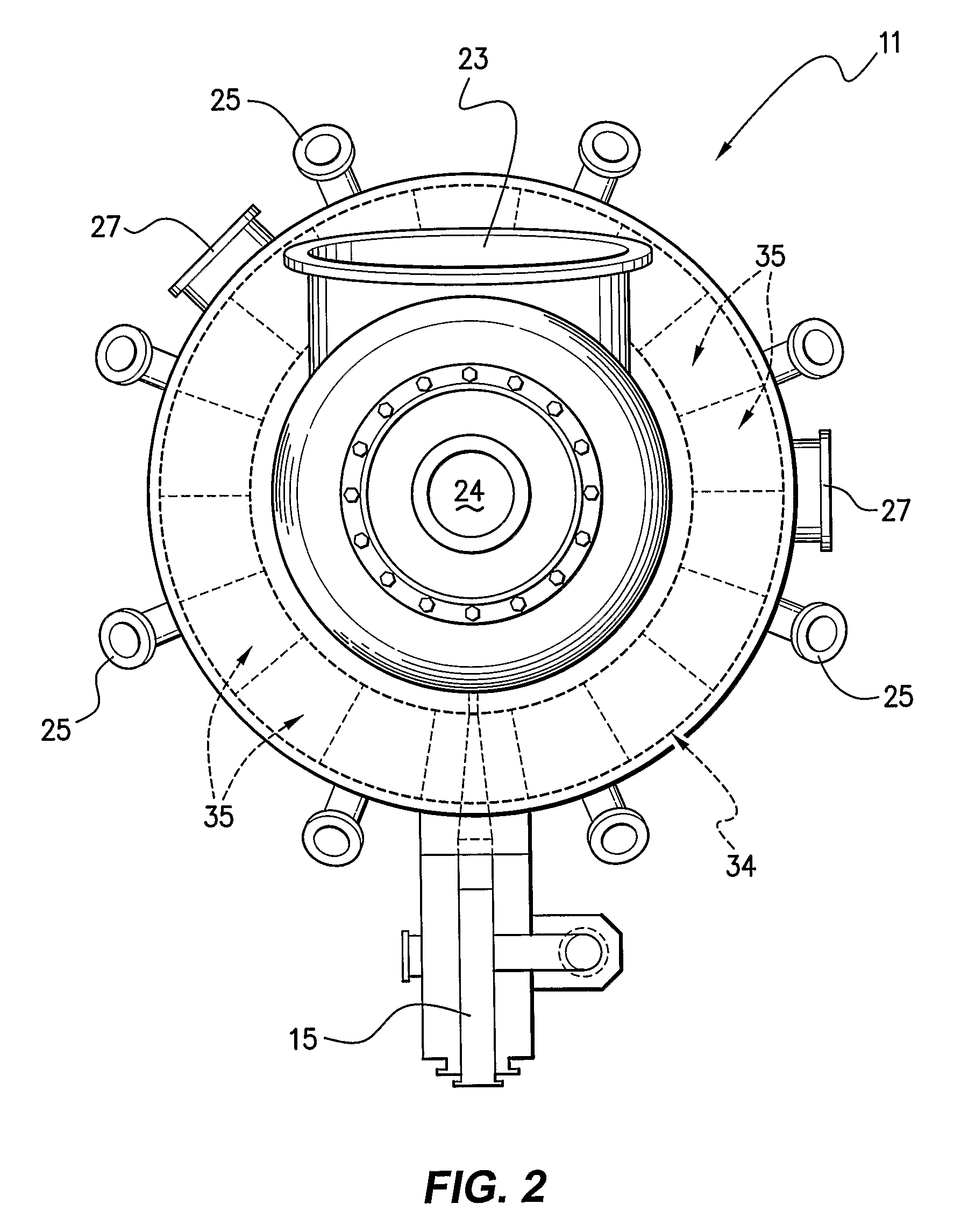Direct smelting vessel and cooler therefor
a technology of smelting vessel and cooler, which is applied in the direction of manufacturing converters, furnace cooling, blast furnace components, etc., can solve the problems of refractory erosion of the upper part of the hearth, and achieve the effect of simple and robust design
- Summary
- Abstract
- Description
- Claims
- Application Information
AI Technical Summary
Benefits of technology
Problems solved by technology
Method used
Image
Examples
Embodiment Construction
[0075]FIGS. 1 to 6 of the drawings illustrate a direct smelting vessel suitable for operation of the HIsmelt process as described in U.S. Pat. No. 6,267,799 and International Patent Publication WO 96 / 31627. The metallurgical vessel is denoted generally as 11 and has a hearth 12 which includes a base 13 and sides 14 formed of refractory bricks, a forehearth 15 for discharging molten metal continuously and a tap hole 16 for discharging molten slag.
[0076]The base of the vessel is fixed to the bottom end of an outer vessel shell 17 made of steel and comprises a cylindrical main barrel section 18, an upwardly and inwardly tapering roof section 19, and an upper cylindrical section 21 and lid section 22 defining an offgas chamber 26. Upper cylindrical section 21 is provided with a large diameter outlet 23 for offgases and the lid 22 has an opening 24 in which to mount a downwardly extending gas injection lance (not shown) for delivering a hot air blast into the upper region of the vessel. ...
PUM
| Property | Measurement | Unit |
|---|---|---|
| temperatures | aaaaa | aaaaa |
| refractory | aaaaa | aaaaa |
| size | aaaaa | aaaaa |
Abstract
Description
Claims
Application Information
 Login to View More
Login to View More - R&D
- Intellectual Property
- Life Sciences
- Materials
- Tech Scout
- Unparalleled Data Quality
- Higher Quality Content
- 60% Fewer Hallucinations
Browse by: Latest US Patents, China's latest patents, Technical Efficacy Thesaurus, Application Domain, Technology Topic, Popular Technical Reports.
© 2025 PatSnap. All rights reserved.Legal|Privacy policy|Modern Slavery Act Transparency Statement|Sitemap|About US| Contact US: help@patsnap.com



